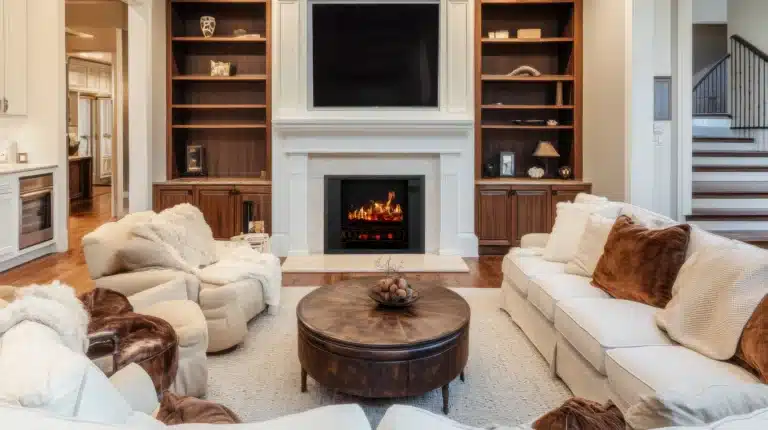When it comes to enjoying the warmth and ambiance of a fireplace, safety should always be a top priority. While MagikFlame electric fireplaces are inherently safer than traditional wood-burning or gas fireplaces, it’s still crucial to protect your flooring and surrounding areas from potential heat damage. This is where hearth pads and fire-resistant materials come into play. Let’s explore how these essential safety features can safeguard your home and enhance your fireplace experience.
Understanding Hearth Pads
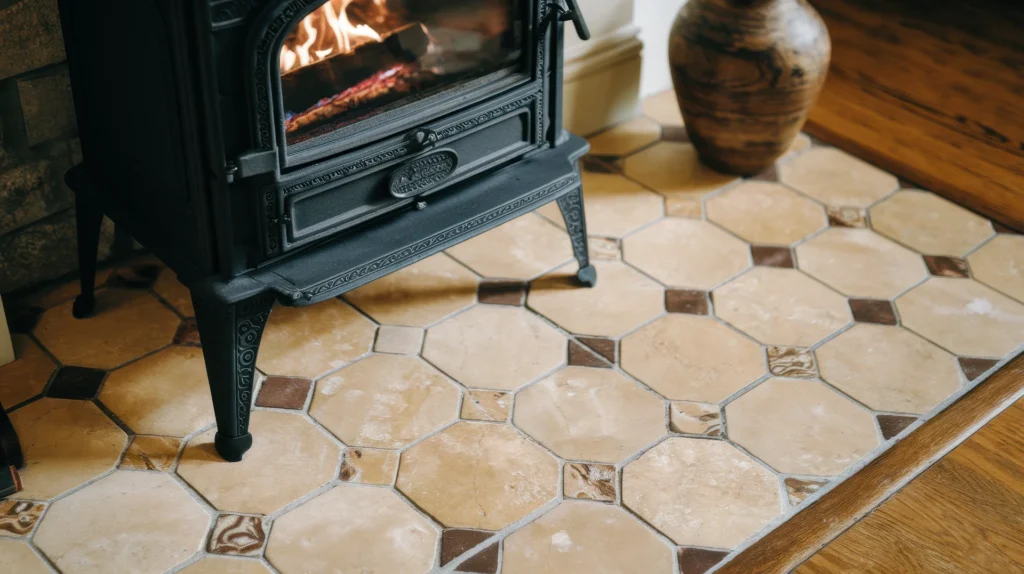
A hearth pad is a protective barrier placed underneath and in front of a fireplace to shield the floor from heat, sparks, and embers. While electric fireplaces like MagikFlame don’t produce actual flames or embers, a hearth pad can still provide valuable protection and aesthetic appeal.
Types of Hearth Pads:

- Pre-fabricated pads
- Custom-built pads
- Raised hearths
- Flush hearths
- Extended hearths
Materials Used in Hearth Pads
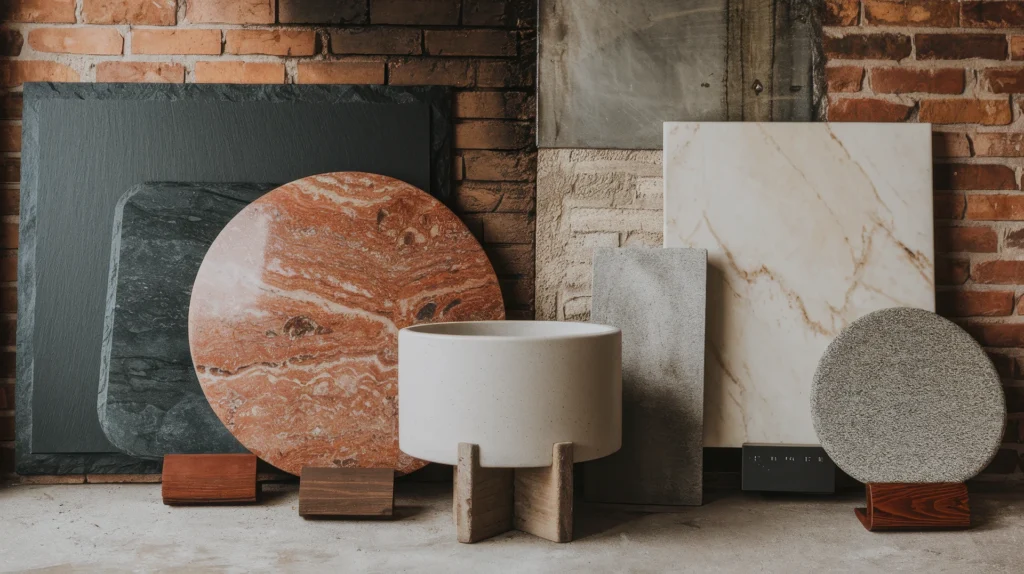
The effectiveness of a hearth pad largely depends on the materials used in its construction. Here’s a comparison of common hearth pad materials:
| Material | Heat Resistance | Durability | Aesthetic Appeal | Cost |
| Slate | High | High | High | Moderate to High |
| Granite | Very High | Very High | High | High |
| Marble | Moderate | High | Very High | High |
| Ceramic Tile | High | Moderate | Moderate to High | Low to Moderate |
| Concrete | Very High | Very High | Moderate | Low to Moderate |
| Steel | Very High | Very High | Moderate | Moderate |
This table compares different hearth pad materials based on their heat resistance, durability, aesthetic appeal, and cost. Slate and granite offer high heat resistance and durability with high aesthetic appeal, but at a higher cost. Ceramic tile and concrete provide good heat resistance at a lower cost, while steel offers excellent heat resistance and durability at a moderate price point.
Fire-Resistant Materials for Surrounding Areas
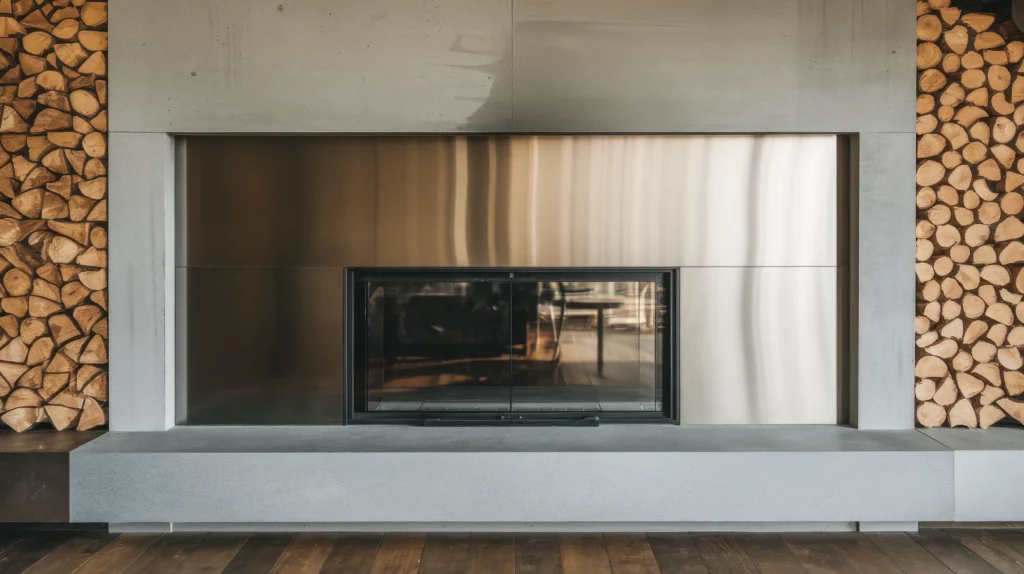
In addition to hearth pads, it’s important to consider fire-resistant materials for the walls and mantel surrounding your fireplace. Here are some popular options:
- Fire-resistant drywall
- Brick or stone veneer
- Cement board
- Metal panels
- Fire-resistant paint or coatings
Sizing Your Hearth Pad
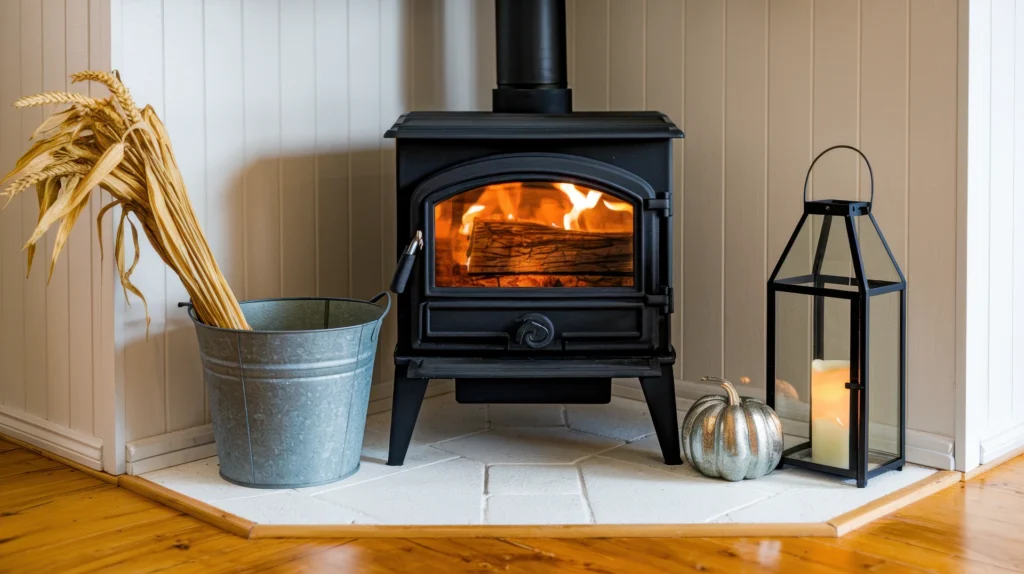
Proper sizing of your hearth pad is crucial for adequate protection. While requirements may vary depending on local building codes and fireplace type, here are some general guidelines:
Minimum Hearth Pad Dimensions:
– Width: Fireplace opening width + 16 inches (8 inches on each side)
– Depth: At least 16 inches extending in front of the fireplace
– For corner installations: Extend at least 16 inches on both sides
This list provides general guidelines for minimum hearth pad dimensions, including width (fireplace opening width plus 16 inches), depth (at least 16 inches in front of the fireplace), and corner installation requirements (at least 16 inches on both sides).
Installation Considerations
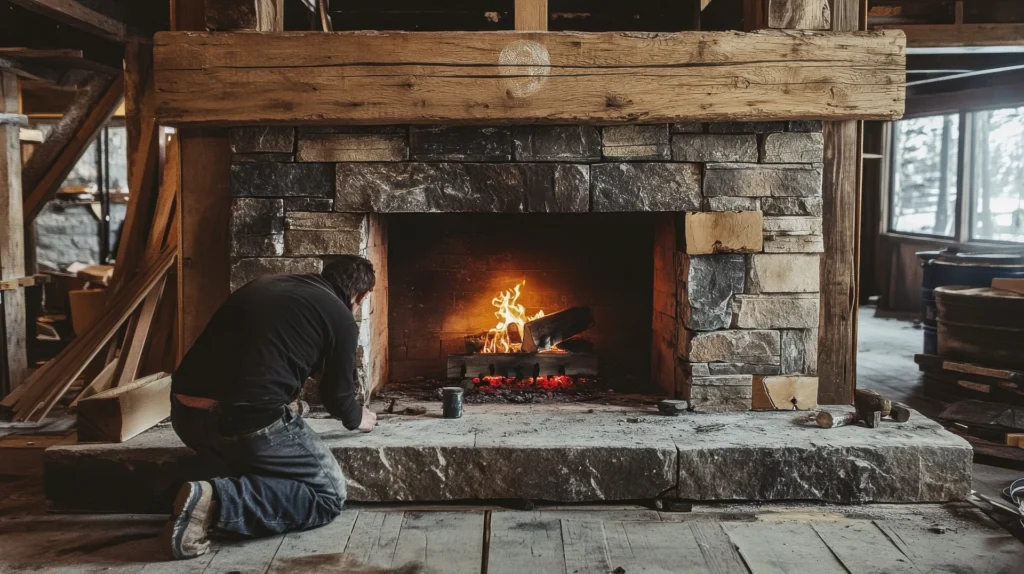
Proper installation of hearth pads and fire-resistant materials is crucial for their effectiveness. Here are some key considerations:
- Ensure a level surface for the hearth pad
- Use appropriate adhesives and grout for the chosen material
- Allow for proper ventilation if required
- Follow manufacturer’s instructions and local building codes
- Consider professional installation for complex materials or designs
Enhancing Safety with MagikFlame Electric Fireplaces
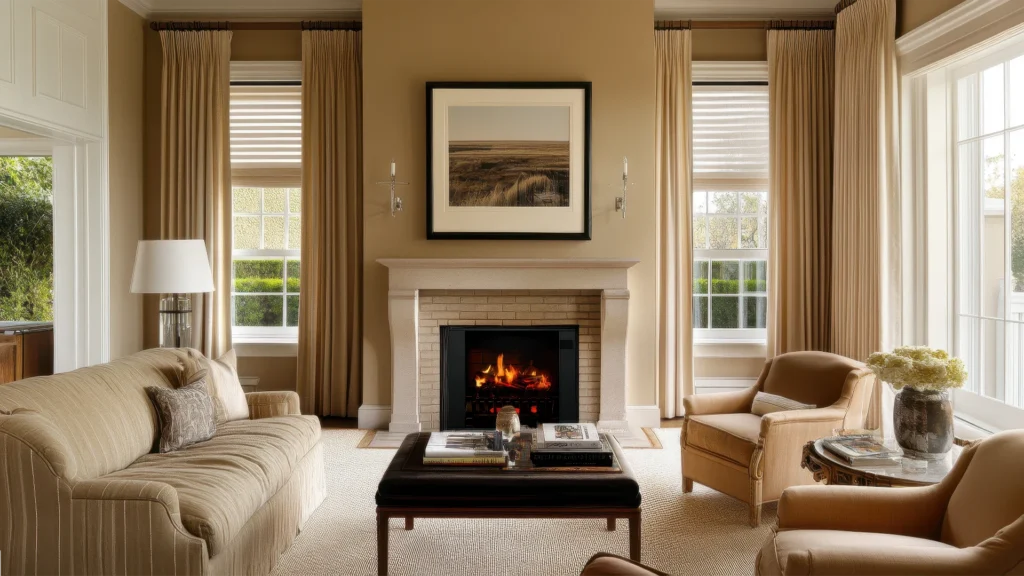
While MagikFlame electric fireplaces are designed with safety in mind, incorporating a hearth pad and fire-resistant materials can provide additional peace of mind and aesthetic benefits. Here’s how MagikFlame’s features complement these safety measures:
- Cool-touch glass reduces the risk of accidental burns
- No real flames or embers eliminate the need for extensive floor protection
- Built-in safety features like automatic shut-off further reduce risks
- Customizable flame options allow for a perfect match with your hearth pad design
- Energy-efficient operation minimizes heat output to surrounding areas
Maintenance and Care
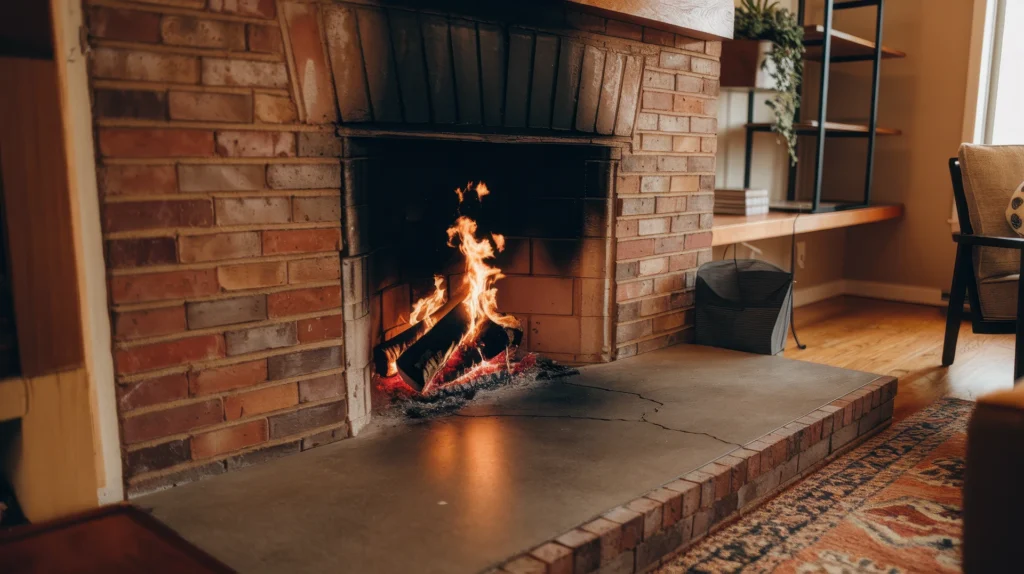
To ensure long-lasting protection and beauty, proper maintenance of your hearth pad and fire-resistant materials is essential:
Maintenance Tips:
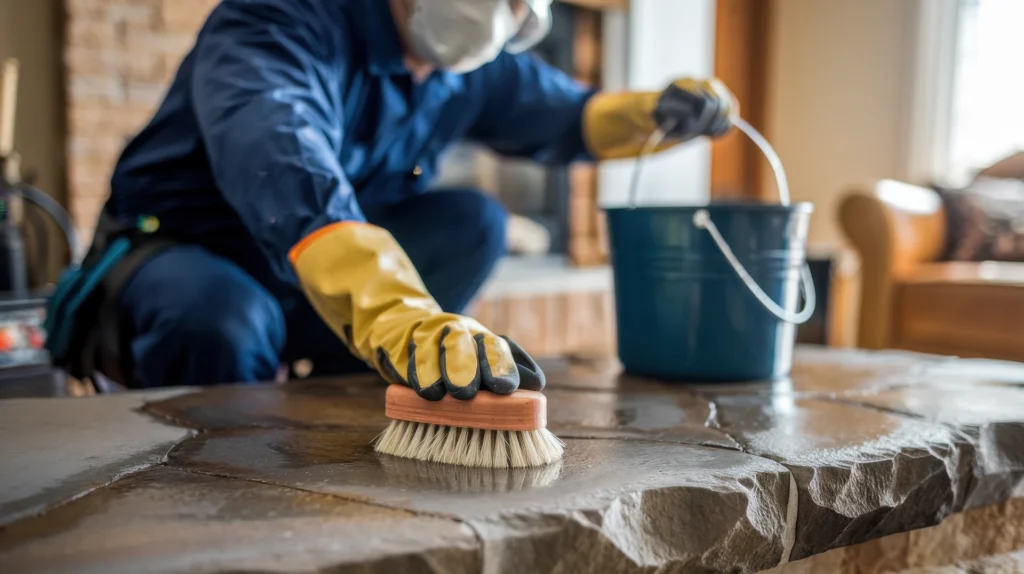
- Regular cleaning with appropriate products for the material
- Prompt repair of any cracks or damage
- Periodic sealing for natural stone materials
- Inspection for signs of heat damage or discoloration
- Refinishing or recoating as needed for optimal protection
Aesthetic Considerations
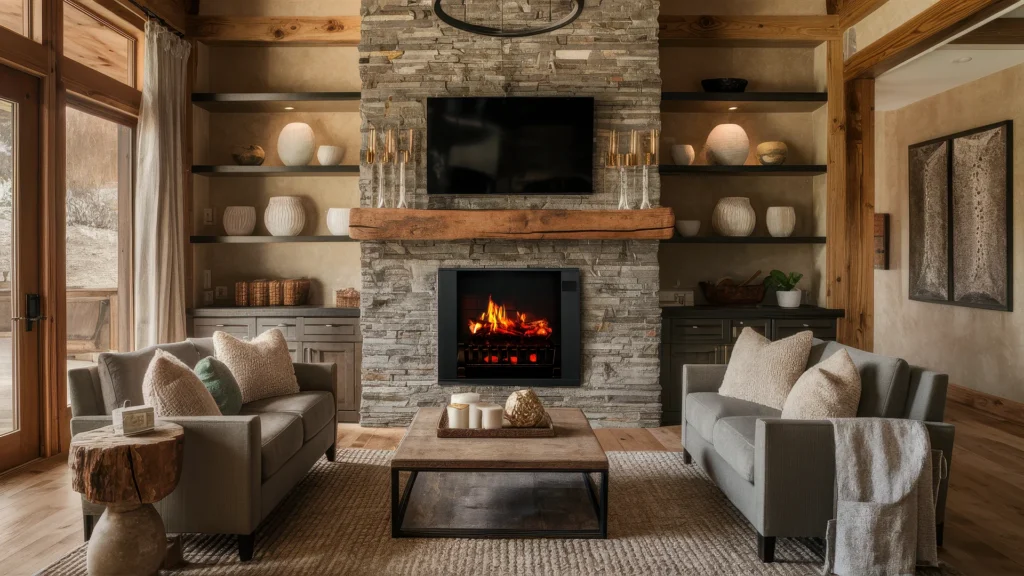
Beyond their protective function, hearth pads and fire-resistant materials can significantly enhance the visual appeal of your fireplace area. Consider these design aspects:
- Complementary colors and textures to match your decor
- Patterns or inlays for added visual interest
- Mixing materials for a unique look (e.g., stone and metal)
- Extending the hearth pad to create a seating area
- Coordinating with MagikFlame’s customizable flame options for a cohesive look
Cost Considerations and ROI

Investing in quality hearth pads and fire-resistant materials can seem expensive upfront, but it’s important to consider the long-term benefits:
| Investment | Initial Cost | Long-term Savings | Added Value |
| Basic Hearth Pad | $200 – $500 | Moderate | Low to Moderate |
| Custom Hearth Pad | $500 – $2,000+ | High | Moderate to High |
| Fire-Resistant Wall Materials | $500 – $3,000+ | Very High | High |
| Professional Installation | $300 – $1,000+ | High | Moderate |
This table compares the initial cost, long-term savings, and added value of different fireplace safety investments. A basic hearth pad costs between $200 and $500 with moderate long-term savings, while custom hearth pads and fire-resistant wall materials have higher initial costs but offer greater long-term savings and added value to your home.
Building Codes and Regulations

It’s crucial to be aware of local building codes and regulations regarding hearth pads and fire-resistant materials. While requirements may vary by location, some common regulations include:
- Minimum hearth pad dimensions
- Approved materials for hearth construction
- Required R-value (thermal resistance) for hearth pads
- Clearance requirements for combustible materials
- Permits and inspections for fireplace installations
Always consult with local authorities or a certified professional to ensure compliance with all relevant codes and regulations.
Conclusion
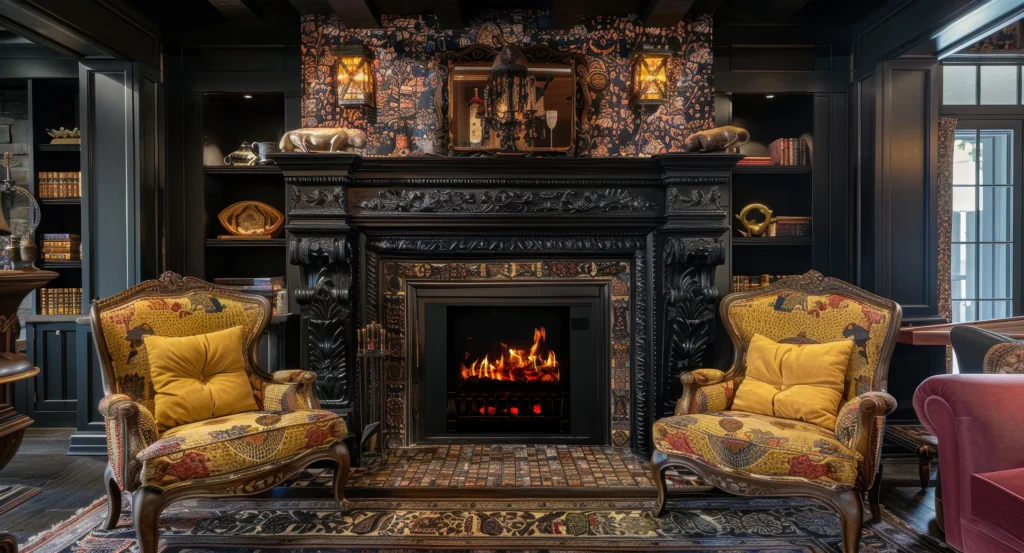
While MagikFlame electric fireplaces offer a safer alternative to traditional wood-burning or gas fireplaces, incorporating hearth pads and fire-resistant materials into your fireplace area provides an extra layer of protection and peace of mind. These safety features not only safeguard your flooring and surrounding areas from potential heat damage but also enhance the overall aesthetic appeal of your fireplace.
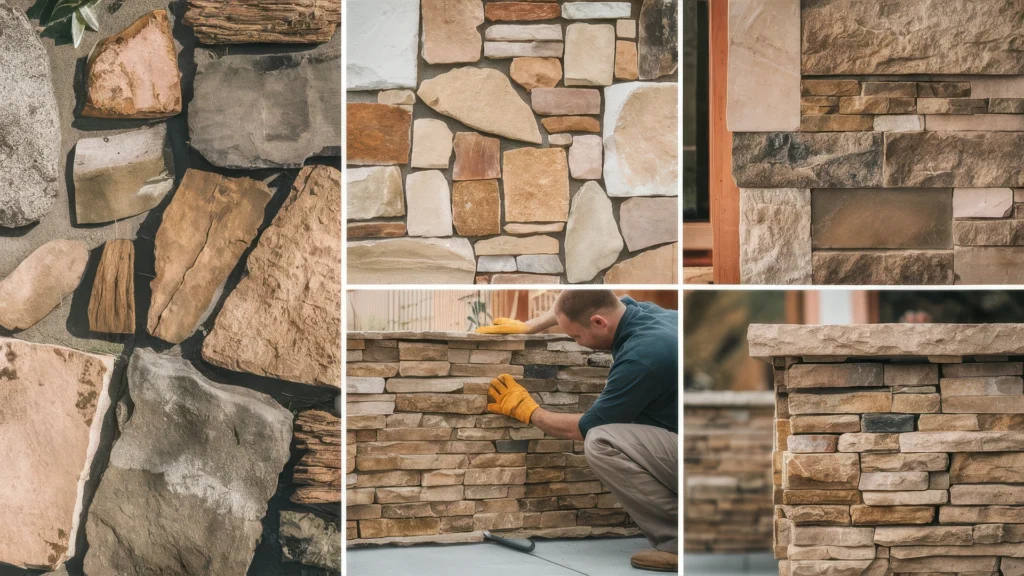
By carefully selecting the right materials, ensuring proper installation, and maintaining these protective elements, you can create a beautiful and safe focal point in your home. The investment in quality hearth pads and fire-resistant materials pays off in the long run through increased safety, reduced risk of property damage, and added value to your home.
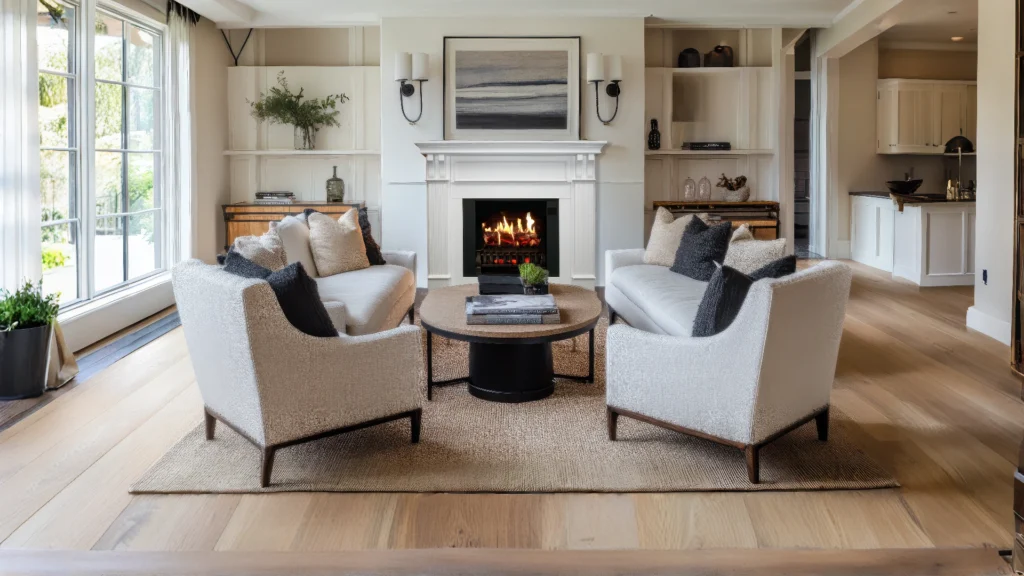
As you enjoy the realistic flame effects and efficient heating of your MagikFlame electric fireplace, you can rest assured that your flooring and surrounding areas are well-protected. With the right combination of innovative fireplace technology and tried-and-true safety measures, you can create a cozy, stylish, and secure environment for you and your loved ones to enjoy for years to come.










